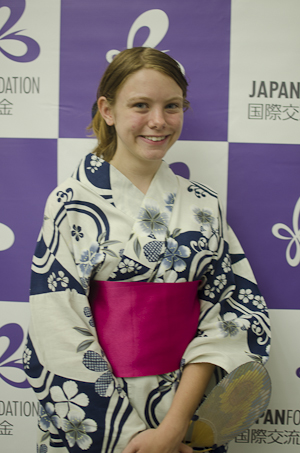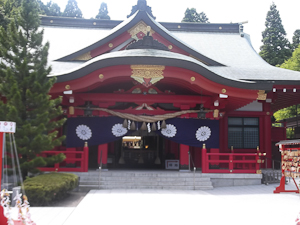

 Corrine Quirk
Corrine Quirk
Clarkstown High School South
New City, NY
My experience in Japan was an emotional roller-coaster. I had never travelled alone, let alone outside the country, so it was very exciting to embark on my own adventure. Arriving in LA and going through orientation, it quickly sunk in that this was not quite an adventure, and we would certainly not be alone. The 32 participants of the 2012 JET-MIP bonded incredibly fast, providing a tight-knit family throughout the trip, both as emotional support throughout the Tohoku region, and to share in the more uplifting and exciting parts of the trip. While in the Tohoku region, my most poignant memory is of seeing the devastation for the first time in Rikuzentakata. Our study tour was not until the next day, and earlier that day we had visited a temporary elementary school and a local restaurant. I am not sure of the others, but seeing the temporary housing and schools, I felt as though the recovery efforts were going well and felt reassured. This was until we began to drive through what was once the actual center of town-now existing as only frames of former homes, the occasional skeletal building, and mountains of debris. This for me was the most humbling moment of the trip, as all of the stories of devastation I had heard final rang true in a tangible form in front of me: You never really understand the extent of the devastation until you see it.
However, the most amazing thing about the town was the people. Our tour guide for the study tour in Rikuzentakata the next day, after spending the day sharing stories of his home town and survival stories of his friends, family, and even himself, pleaded with us not to worry, for it would only worry him if we worried too much. He emphasized that they were doing just fine, and that they were carrying on. Similarly, when we met with high school students of the area for a US-Japan high school student summit, the students were nothing but cheerful. At the summit itself, it was all business—we discussed how we could act as bridges between our two countries, as individuals. Before and after though, we snuck in some social conversation, and while neither of us was proficient in the other’s language, we were instantly friends. That night we had dinner with them and spent the evening chatting about our lives, switching between English and Japanese as we pleased. We often couldn’t find the words to communicate an idea, and would have to explain in lengthy, round-a-bout descriptions until the other understand. I think this helped us bond even further as we struggle with each other’s languages. But it also solidified in me a desire to continue my Japanese studies, if for no other reason than that I now have a couple very good friends I would like to keep up with.
While I have not yet been able to share my experience in a presentation yet, I have spoken both with my sensei of six years, and with my family and many of my friends. Unfortunately what I have found is that it is near impossible to communicate the state of the region unless you’ve seen it. My sensei and one of my friends recently visited Fukushima, so they understand thoroughly the extent of damage, and have conveyed the same frustration—that there seem to be no words to express what we’ve seen completely. However, people are very willing to listen to what we do say, and were incredibly surprised that the devastation has had such a lasting effect. Many people assumed that the recovery was well on its way and that everyone had resumed normal life. Most people had forgotten about the disaster entirely. To hear that the towns were still in such a devastated state shocked many to silence, and clearly made people uncomfortable by challenging their assumption that because the media no longer reported on it, that there was no longer a problem. Still, the perseverance of the people and their incredible kindness is what inspired me while on my trip, so I do hope that in my retelling of their tales I could capture that in them and inspire others by the selflessness of those I encountered.
Finally, to Ms. Anderson and Mr. Dickson, though they are no longer with us, I would like to express my gratitude towards them for making such a strong impact in the towns they lived in taught in while living in Japan, and for the legacy they have left for other Americans. They truly acted as bridges between our two nations, and hearing their family members, friends, and students talk about them and their passions, it is clear that as the next generation of JETs, and as individuals who make up the bridge between Japan and the US, that they have set high standards for us to adhere to.

This is a the first large shrine I had ever seen located at the grounds of Sendai Castle.